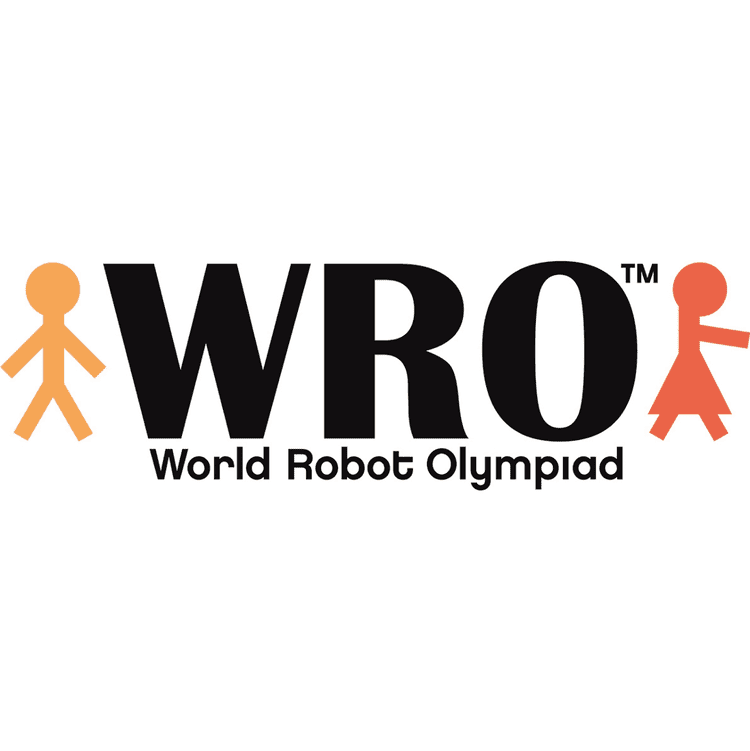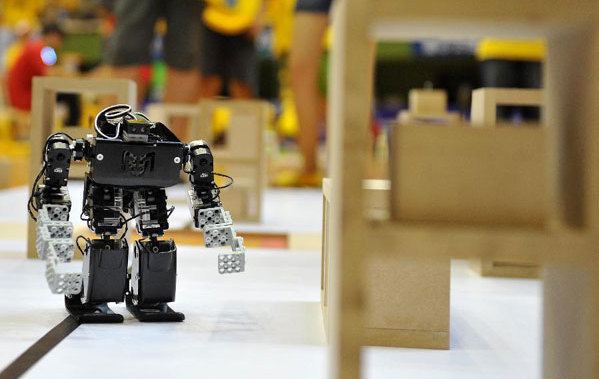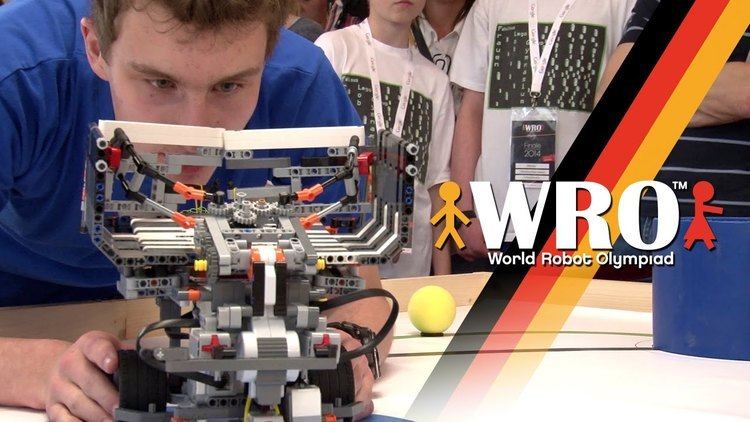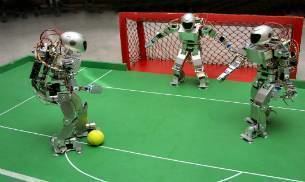Founded 1999 Venue(s) See Below No. of teams 18,450+(2013) Inaugural season 2004 | Countries See below Official website www.wroboto.org | |
 | ||
Formerly International Robot Olympiad Motto To bring together young people all over the world to develop their creativity, design & problem solving skills through challenging & educational robot competitions and activities Qualification By winning the national/state competition Most titles Unknown (Possibly Malaysia or Thailand) | ||
World robot olympiad wro deutschland germany imagefilm 2014 2015
The World Robot Olympiad is a global robotics competition for young people. The World Robot Olympiad competition uses Lego Mindstorms manufactured by LEGO Education. First held in 2004 in Singapore, it now attracts more than 20,000 teams from nearly 60 countries.
Contents
- World robot olympiad wro deutschland germany imagefilm 2014 2015
- Students flock to india for world robot olympiad
- History
- Regular
- Advanced Robotics Challenge UniversityCollege
- Open
- WRO Football
- Changes to the Gameplay
- Countries participating
- Guest Countries
- Notable sponsors
- References

The competition consists of 4 different categories, Regular, College, Open and Soccer and for the Regular and Open categories, it consists of three different age groups: Elementary, Junior High and Senior High. Participants below the age of 13 are considered as Elementary, participants from ages 13 until 16 years old are considered Junior High and participants between 17–19 are considered Senior High. Participants can also compete outside their age group, but they must be younger than the specified age range and must partner up with someone in that age range. For example, a 12-year-old participant can join the Junior High sub-category only if teamed up with someone between 14 and 16.

Students flock to india for world robot olympiad
History

WRO was formally established in 2003, with the first international WRO final being organized in 2004. Organizations from China, Japan, Singapore and Korea are considered the founding countries. In 2004 teams from China, Chinese Taipei, Hong Kong, India, Indonesia, Japan, Korea, Malaysia, Philippines, Russia, Singapore and Thailand took part in the first international final, held in Singapore.

In 2003 the four founding countries established the international WRO Committee (now known as the WRO Advisory Council), which decided to establish a new and permanent robotics organisation, based on the idea that students from all over the world should have the opportunity to meet with other students to fulfil the new mission statement:
"To bring together young people all over the world to develop their creativity, design & problem solving skills through challenging & educational robot competitions and activities"
The WRO Committee decided on the new name WORLD ROBOT OLYMPIAD, and new WRO logos were developed.
Finally the WRO Statutes and a set of General Rules were worked out to ensure a sound and safe future for WRO. One of the major decisions, which appears in the Statutes, was that the international WRO event should be hosted by a new country each year and the WRO Committee should elect a Chairman.
Regular
Teams must create a robot which can complete a specified mission determined by the organiser and usually based on the Open Category theme. Before the competition begins, the robot must be fully dismantled: for example, the batteries must be taken out of the brick or the tyres must be taken out from the wheels. It must be built in a specified time (150 minutes) before the first qualification round begins. If a team finishes building their robot before the 150 minutes finish, the team can practice on the competition fields. Each robot is restricted to be 25 × 25 × 25 cm (9.8 × 9.8 × 9.8 in) before the round begins, and may consist of only LEGO certified parts, with specified motors and sensors depending on each competition. It must finish the mission autonomously, within a maximum time of two minutes. Teams are judged on their scores. If two teams' scores are equal, they are judged by their time to the nearest millisecond. The top 8 or the top 16 performers then proceed to the final two or three rounds.
Starting from the 2014 competition, the final round teams were first asked to test their robots for 30 minutes before the first judging rounds, then were given another 10 minutes for testing before being judged again.
Advanced Robotics Challenge (University/College)
Teams compete on a set challenge. Robots may be pre-built and may use certain TETRIX and MATRIX elements. Teams may use either one MyRIO or KNR controller, or two EV3/NXT controllers; there are no restrictions on choice and number of sensors, motors and servos. The size of the robot before it begins must be within 45 × 45 × 45 cm (17.7 × 17.7 × 17.7 in). The maximum time differs depending on each competition.
Open
Teams are required to present their robot with a designated theme. They are judged by their presentation and the functionality of the robot. Robots which are unrelated to the theme score zero points.
WRO Football
Introduced in the Manila competition in 2010, the Soccer competition allows teams to create soccer playing robots with a special infrared sensor. The participants must be age 10–19. The mat was used in the early RoboCup Junior competitions before being adopted by the Australian competition. Robots must fit in a 22 cm (8.7 in) diameter cylinder with a height of 22 cm (8.7 in).
Starting from 2015, robots are not allowed to 'dribble', which means that robots will not have the ability to manipulate the ball. The sensor-guiding field will be replaced with a completely green field starting from 2016.
Changes to the Gameplay
As the missions of the Regular, WRO Football and College Category get tougher and more teams in the Open Category are willing to present more creative-looking robots, organisers have to make changes to the list of eligible sensors, motors and bricks to be used in the competition. Initially only RCX bricks, motors and sensors were allowed. In the 2007 competition NXT bricks, motors and sensors were allowed as well. In 2011 the NXT colour sensor was added; in 2012, the HiTechnic colour sensor. In 2013 an EV3 robot was exhibited that used all four motors. In 2014, however, EV3 bricks, motors and sensors were allowed, but the number of motor ports was limited to three, and the EV3 Gyro sensor was not allowed. The 2015 competition allowed four motor ports and the gyro sensor, but not RCX bricks, motors, or sensors.
There are also a few changes to the number of categories. The earlier versions of this competition, before 2006, consists of only Regular and Open and that further sub-divides to only two age groups, Primary and High School.
Countries participating
Previous host countries are italicised while future host countries are bolded. Countries which are both previous and future hosts will have an asterisks (*).
Guest Countries
Guest countries are countries who send less than 20 teams to compete. Their teams are not ranked.
